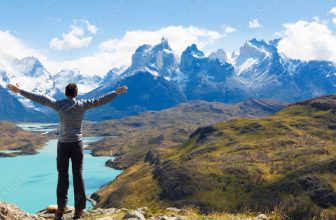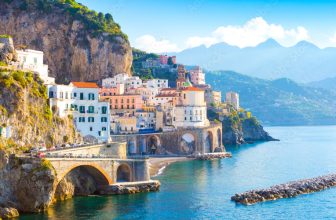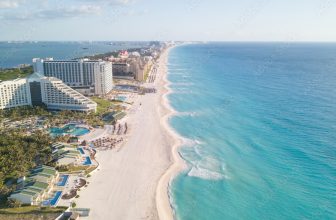
The Rocky Mountains of Montana are home to Glacier National Park, a spectacular, 1.583 square mile landscape of ice-carved peaks and valleys. You can cross the park on the Going-to-the-Sun Road, and choose from 700 miles of hiking trails, including the route to Hidden Lake. You can also go backpacking, cycle, or do some mountain climbing in this national park, which is rich in diverse wildlife.
Logan Pass
The highest point in Glacier National Park is Logan Pass. Named for Major Willian R. Logan, it is the highest point on the Going-to-the-Sun road. The road is one of the most popular tourist destinations in Glacier, Montana. Visiting Logan Pass will give you the opportunity to see breathtaking views of the area. In the winter, the snow is particularly beautiful and the road can be slick.
The drive up to Logan Pass from Yellowstone takes about two hours. The road starts at West Glacier, passes St. Mary, and then climbs through Logan Pass. The park’s Visitor Information Center is located at 6,700 feet and provides an overview of the region’s wildlife and plants. Open from mid-June to late September, the center offers exhibits about wildlife and plants found in the alpine zone.
The high-altitude landscape of Logan Pass makes it one of the most popular destinations in Glacier National Park. From the peak, you can enjoy breathtaking views of mountains, lakes, and glacial lilies. The scenery from this location will remind you of your hikes with mountain goats, your treks to Hidden Lake, and your time on Bearhat Mountain. It is an amazing park that is sure to impress you with its breathtaking beauty.
If you’re planning on hiking, plan to bring water and snacks. You should plan on spending around two hours hiking through the park, so make sure to bring plenty of water and snacks. And remember to pack your own snacks if you plan to eat anywhere along the way. Just don’t forget to pack your trash! If you’re planning to hike, check out the current status of the trails before heading out.
734 miles of hiking trails
There are approximately 734 miles of established hiking trails in Glacier National Park. Jake Bramante, 33, has decided to hike them all in a single season. Bramante has been meticulously planning his journey, and hopes to complete the entire park in six months. He plans to make his expedition a public event by offering talks and screenings to a wide audience. If you’d like to see his trip, read on to learn more about his journey and his plans for the future.
For the adventurous, Glacier National Park offers seventy-four miles of hiking trails for every experience level and ability. From family-friendly boardwalk hikes around massive old-growth trees near Lake McDonald to challenging mountain passes, there’s a trail for everyone. Don’t forget to pack bear spray and a backpack for this park, which has numerous hiking trails. If you want to get a complete view of the park’s landscape, you’ll need a guide.
Swiftcurrent Pass Trail: This trail is often considered the most challenging day hike in Glacier National Park. It features spectacular views, emerald lakes, and an abundance of wildlife. The trail starts at the Swiftcurrent Trailhead and ends at the Redrock Lake. You’ll be rewarded with spectacular views of Mount Carter and Rainbow Park, as well as the famous Square Peak. If you like a longer hike, you may consider taking a shortcut, or taking a scenic detour on the way to the top of Swiftcurrent Pass.
150 distinct glaciers
In 1910, President William Howard Taft designated Glacier National Park, a place that would soon have over 150 distinct glaciers. Back then, they could be seen from the road and from walking trails. Today, there are only about two-thirds of that number, and some are so small that you can’t even tell they exist. Regardless, the park is still worth a visit, even if you don’t have time to hike up to the mountain tops.
One of the most famous glaciers in the park is the Grinnell Glacier, which has lost 90 percent of its ice in the past century. Today, only about 25 of the 150 glaciers are present in the park, with all of them expected to melt away by 2030 due to climate change. The glaciers were once as large as five football fields, and Grinnell Glacier once stretched across a valley-like crevice on the Continental Divide. It’s the last vestige of a past ice age that left jagged cliffs and ice fields.
The park’s ice caps are the result of massive ice-sheets that shaped the United States thousands of years ago. It’s incredible to think that the United States was once covered with more than 150 distinct glaciers. These glaciers have disappeared, and now the park’s ice caps have become only half the size. And with the glaciers melting faster than ever, it’s not only disappearing, but the entire park’s ecosystem is undergoing fundamental changes.
Loss of glaciers
Researchers in the Pacific Northwest state of Washington have mapped the rapid melting of glaciers in Glacier National Park. The findings suggest that the glaciers in Glacier National Park are at risk of disappearing by 2030, and some glaciers are already less than half their current volume. The glaciers are retreating at rates far faster than predicted. Loss of glaciers may affect wildlife and stream water volume and temperature.
The USGS has conducted research in the area using aerial photography and satellite imagery to estimate glacial mass loss. Scientists have also measured changes in the area of glaciers in the park, including Grinnell Glacier, which may contain only 10% of its volume today. The results of the studies have informed the development of signs that warn of the deteriorating conditions. The signs have now changed to reflect the updated science.
Scientists have studied the changes in Yellowstone’s Blackfoot-Jackson Glacier Basin. The area once contained two glaciers that were joined together. Today, however, they have separated into two valleys. Moreover, the glaciers in Blackfoot-Jackson Glacier Basin are shrinking. In the last few decades, Grinnell Glacier has shrunk to a size of 115 acres. Meanwhile, the Upper Grinnell Lake has increased in size.
Fire dangers
A high fire danger rating means that there is a high risk of wildfire in the park. Fire danger in Glacier National Park is a very serious issue and requires visitors to take additional precautions. For example, while visiting the park, it is best to follow all local fire prevention regulations. Fire danger is a very high concern during summer months when the park’s visitor numbers can double. In order to avoid this danger, it is a good idea to check the park’s website and contact local officials if you plan on visiting.
While recent rains have lowered the fire danger, the park remains closed to debris burning and other activities that could cause a fire. Before venturing out into the backcountry, it is advisable to plan ahead of time and notify someone of your travel plans. Fire danger in Glacier National Park can also affect the park’s climate, so it’s a good idea to stay informed on the latest weather forecasts.
There are several forest fires in Glacier National Park. Fires in the park often begin with dry lightning strikes, but are often put out by massive firefighters. On Saturday, the Sprague Fire destroyed the historic Sperry Chalet above Lake McDonald Lodge, but it did not burn all of the historic lodge. Fires have impacted many private residences, including the 82 rooms at the Lake McDonald Lodge. The Going-to-the-Sun road is closed to vehicle traffic, and there are also a number of private residences evacuating.
Wildlife spotting
If you’re interested in wildlife, you must visit Glacier National Park. Bighorn sheep, mountain goats, and elk are all found in the park, as are black bears. Bring binoculars along to watch for wildlife, preferably in the late spring and summer. It is closed during winter. Wildlife spotting in Glacier National Park is a unique experience. Wildlife safety is the top priority when visiting the park.
For good wildlife viewing in Glacier National Park, you can drive on Logan Pass, which divides the park. Here, you can find a highline trail and Hidden Lake trail. If you’re looking for a shorter route, take the Highline Trail or Hidden Lake Trail. You can also visit Logan Pass, the highest point of Glacier National Park. It’s a popular wildlife viewing spot, so try to arrive early to avoid crowds.
To spot wildlife in Glacier National Park, plan your hike early in the morning or late in the evening. Animals congregate near sources of water, food, and shelter. Look around regularly to spot the animals. You can also view moose, black bear, and other wildlife. Wildlife spotting in Glacier National Park can be challenging, but the reward is worth the effort! You can also get a chance to see grizzlies at night if you’re lucky.






